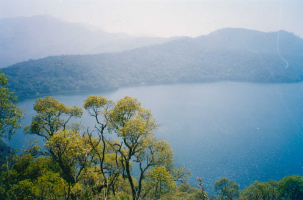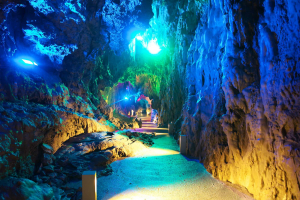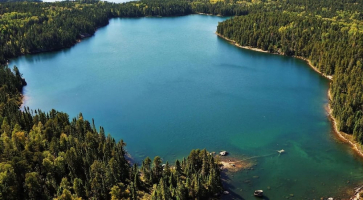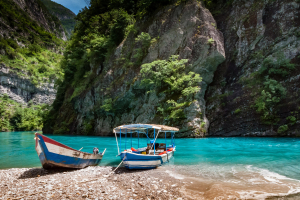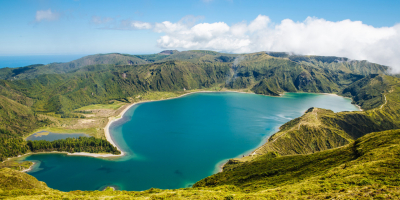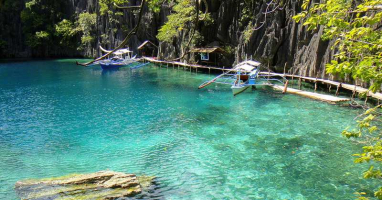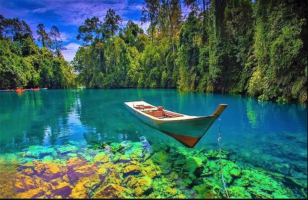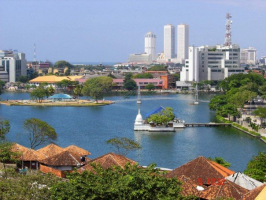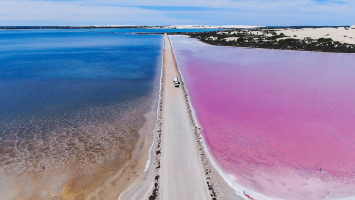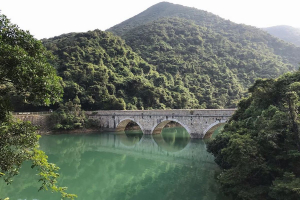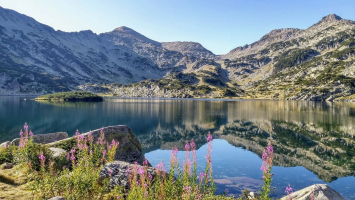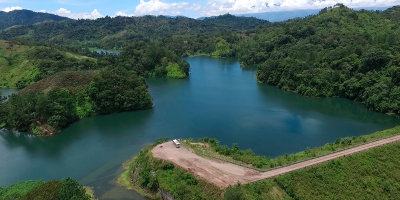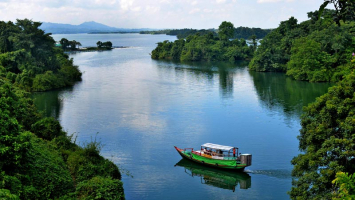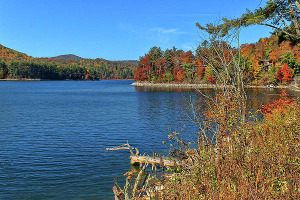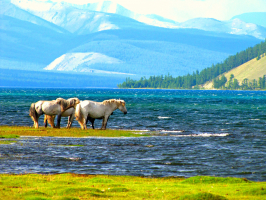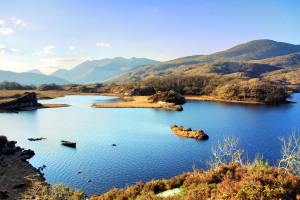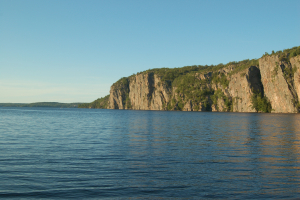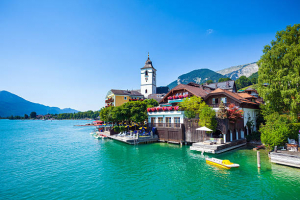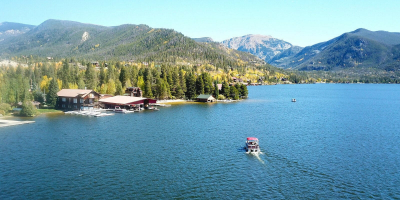Top 11 Most Beautiful Lakes in Japan
The lakes are the ideal summer destination for those who want a place to relax and cool off without descending to cramped beach destinations. In a beautiful ... read more...country like Japan, there is no shortage of beautiful lakes. Let's join Toplist to discover the most beautiful lakes in Japan!
-
One of the most beautiful lakes in Japan is Lake Chuzenji which is a well-liked tourist spot in the region and is situated in the revered Buddhist city of Nikko in Japan. The Toshogu Shrine, the Kanmangafuchi Abyss, and the Shinkyo Bridge are just a few of the World Heritage Sites that surround Nikko, which is only two hours by train from Tokyo. The lake, which is recognized as Japan's largest and highest raised natural lake, is situated at the base of Mount Nantai.
The lake is 25 km in circumference and has a surface area of 11.62 km2. It has a surface elevation of 1,269 m, and the water goes down to a depth of 163 m. The main source of water is the Yukawa River. Through the Kegon Falls, it drains.
Many European embassies constructed holiday homes around the lake in the middle of the Meiji and early Showa periods. The renovated former Italian villa is now welcoming guests. Chuzenji Temple, Kegon Falls, and Futara Shrine, erected in 790, are among the additional locations near the lake. Cherry flowers bloom in the spring. In the summer, people can hike and enjoy bird viewing while escaping the heat. Of course, there are the renowned, breathtaking autumn colors in the fall, and there are winter activities like skiing and ice skating in addition to the Snow and Ice Festival.
Location: Nikkō National Park, Nikkō, Tochigi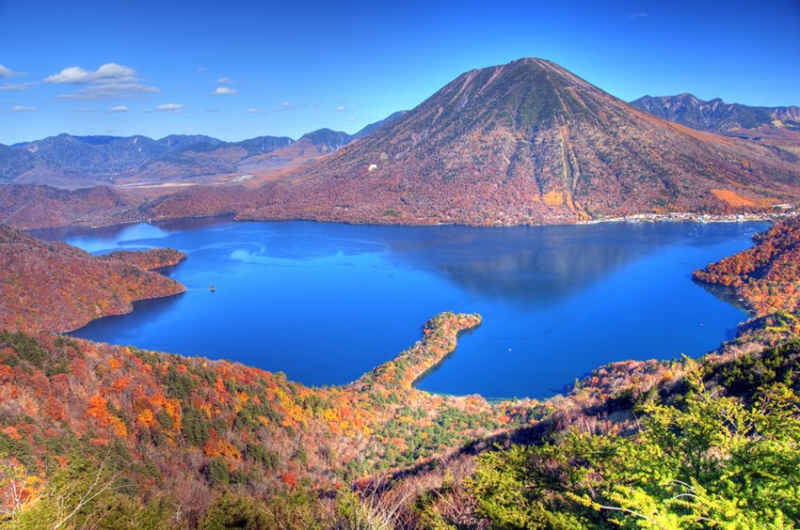
Photo: fun-japan.jp 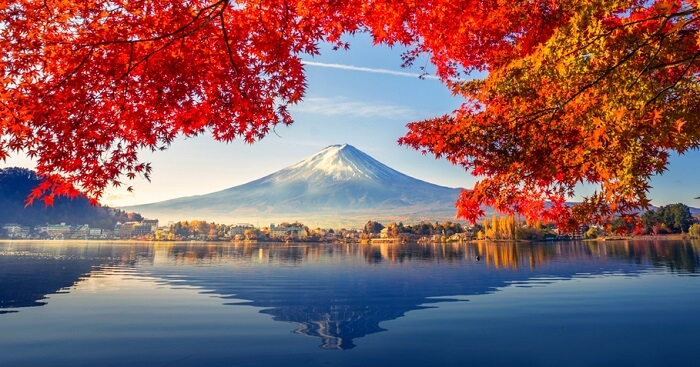
Photo: traveltriangle.com/ -
Fujikawaguchiko, a village in southern Yamanashi Prefecture close to Mount Fuji, is home to Lake Kawaguchi. In terms of surface area, it is the second-largest of the Fuji Five Lakes and is situated at the lowest altitude. Its location at an elevation of roughly 800 meters explains why it experiences frequent ice winters and generally chilly summers. Additionally, of all the Fuji Five Lakes, its shoreline is the longest.
The region, like the other Fuji Five Lakes, is a well-liked vacation spot with lots of hotels on the water, windsurfing facilities, camping grounds, and excursion boats. In the Meiji era, Japanese crucian carp and wakasagi were introduced to the lake.
Sports fishing is also quite well-liked. The tourist infrastructure of Lake Kawaguchi, the most visited of the Fuji Five Lakes, is the most advanced. The region is a key starting point for hikers who want to climb Mount Fuji during the peak climbing months of July and August. Photographers frequently frequent the area because of the expansive views of the mountain that can be had from the coast. As a component of the Fujisan Cultural Site, the lake was added to the World Heritage List in 2013.
Location: Yamanashi Prefecture, Yamanashi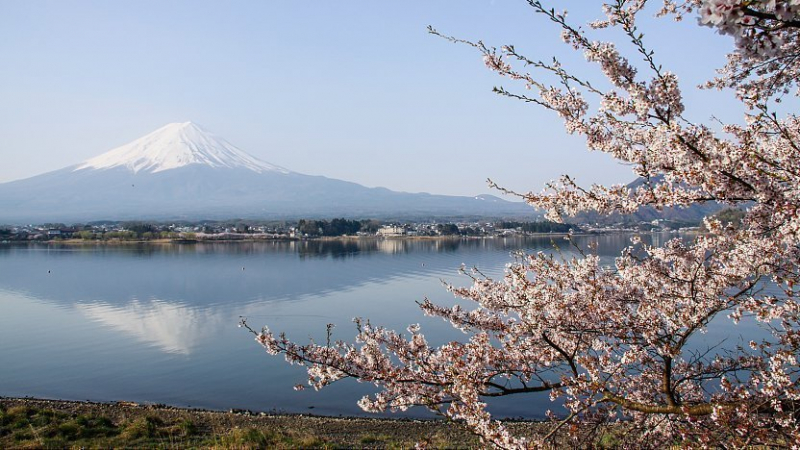
Photo: japan-guide.com 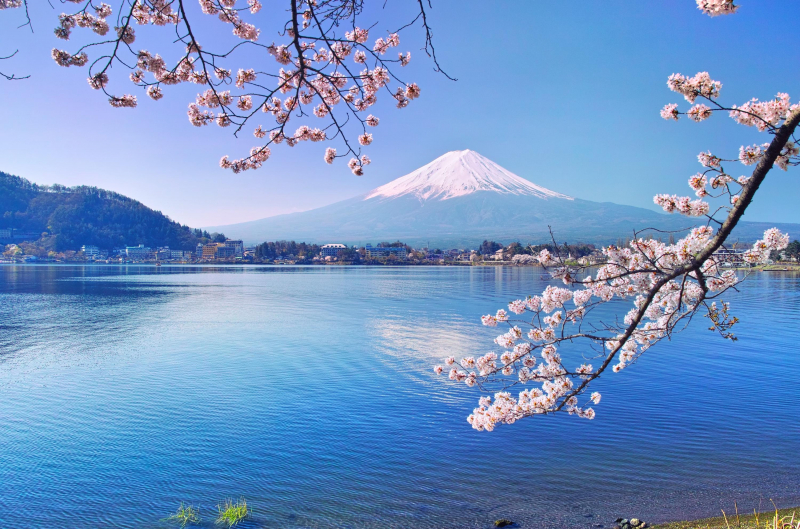
Photo: vn.trip.com -
Northeast of Kyoto, the former capital city of Japan, in Shiga Prefecture (west-central Honshu), is Lake Biwa, the largest freshwater lake in the country. More than 4 million years old, Lake Biwa is a very old lake. It is thought to be the thirteenth-oldest lake on the entire globe. As a result of its proximity to the old city, Lake Biwa is frequently mentioned in Japanese literature, especially in poetry and in chronicles of historical wars.
The lake was created more than four million years ago, and the medieval cities that surround it allow visitors to tour antique shrines, temples, and castles. The name "Lake Biwa" comes from the fact that it naturally resembles a "biwa," a traditional Japanese lute. Around the lake, there are numerous activities available, such as swimming, hiking, and biking.
It is a crucial resource for the nearby textile industries as well as a reservoir for the towns of Kyoto and Tsu. In the Kansai region, it supplies drinking water to around 15 million people. Trout and other freshwater species breed at Lake Biwa, which also serves as a breeding site for the pearl business.
The Lake Biwa Canal, which was initially constructed in the late 1890s and then further developed during the Taish era, was crucial in reviving Kyoto's industrial life after a sharp fall following the transfer of the capital to Tokyo.
Location: Shiga, Japan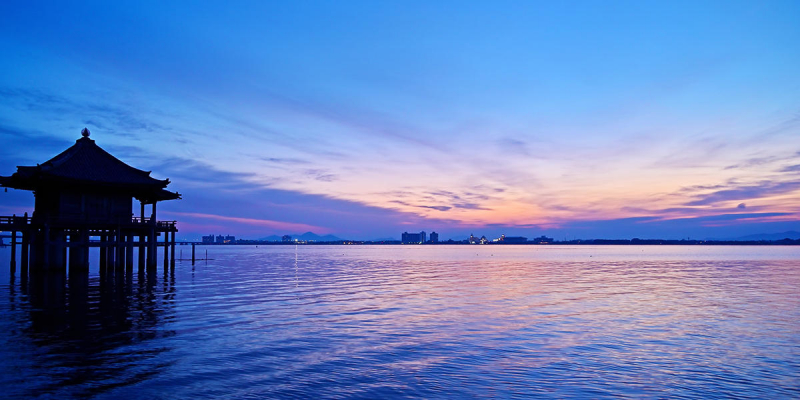
Photo: centrip-japan.com 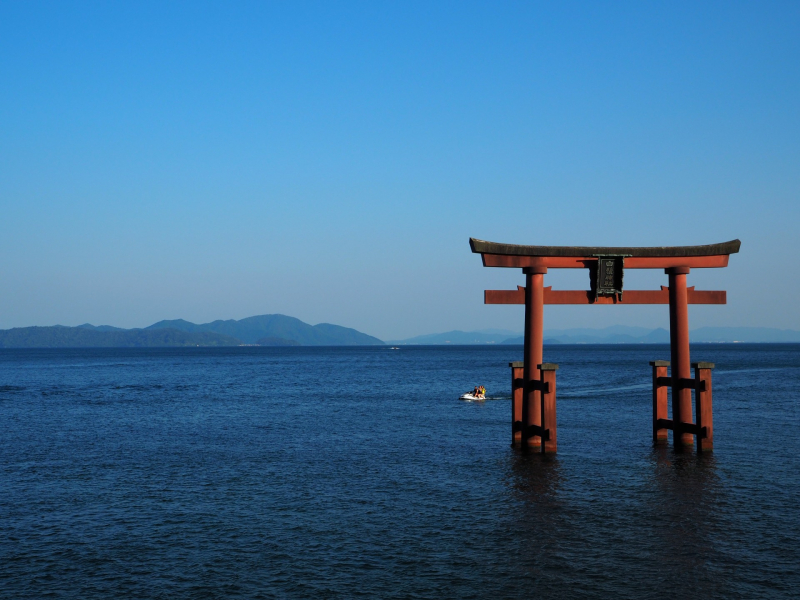
Photo: tourhero.com -
The next position on the list of the most beautiful lakes in Japan is Lake Toya. In the Abuta District of Hokkaido, Japan's Shikotsu-Toya National Park has the volcanic caldera lake known as Lake Toya. It is a part of the Global Geoparks Network's "Toya Caldera and Usu Volcano Global Geopark". On the caldera's southern rim is Mount Usu, a stratovolcano. The lake has a diameter of 10 kilometers from east to west and 9 kilometers from north to south, making it almost round. The majority of the lake's environs are taken up by the town of Toyako, while the eastern side is occupied by the town of Sobetsu.
Lake Toya, which is located at the entrance of Shikotsu-Toya National Park, provides beautiful views of the surrounding landscape. A day excursion to the lake is a fantastic way to experience nature from Sapporo. The word "toya" in Ainu means "lakeshore" due to its proximity to Ainu culture. The floating island Nakashima is located in the middle of the almost octagonal lake. The lake is a fantastic location for hot spring resorts because it is surrounded by active volcanoes like Mt. Usuzan and Showa Shinzan. Around the lake, visitors can camp, trek, and fish.
Location: Iburi Subprefecture, Hokkaidō
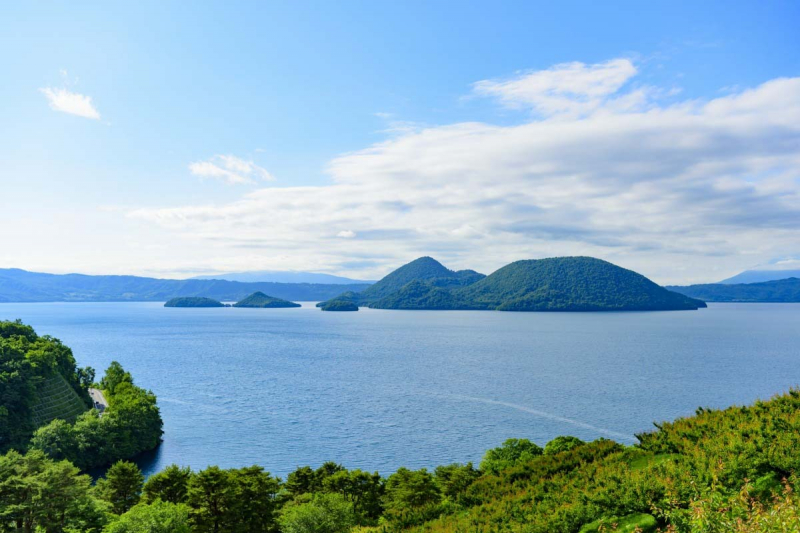
Photo: zekkeijapan.com 
Photo: japan-guide.com -
The largest crater lake in Japan's Honsh island is Lake Towada. It is situated 400 meters above sea level, 327 meters deep, and drained by the Oirase river. It is situated on the border between the prefectures of Aomori and Akita. Towada is the 12th largest lake in Japan by surface area and boasts a vivid blue color because of its considerable depth. Two peninsulas extend from the lake's southern side about a third of the way into the middle, giving the lake a fairly round shape. The lake is a well-liked vacation spot.
The landscape alone is reason enough to travel to the northern hemisphere, which is frequently referred to as the meeting point of earth and sky. The largest caldera lake on Honshu island, it is a part of the Towada Hachimantai National Park. On the dividing line between the prefectures of Aomori and Akita, the lake covers an area of more than 60 square kilometers. The fact that the lake is essentially a twin caldera with an inlet wedged between two peninsulas increases the area's attractiveness. The greatest time to visit Lake Towada is in the fall since the Oirase stream and surrounding areas are very gorgeous due to the autumn foliage.
Location: Honshū, Japan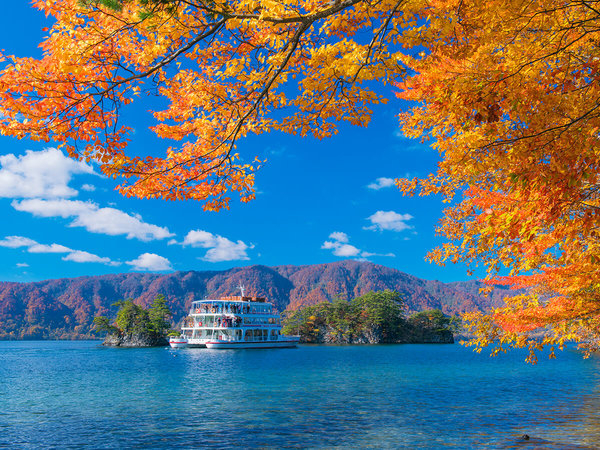
Photo: tohokuandtokyo.org 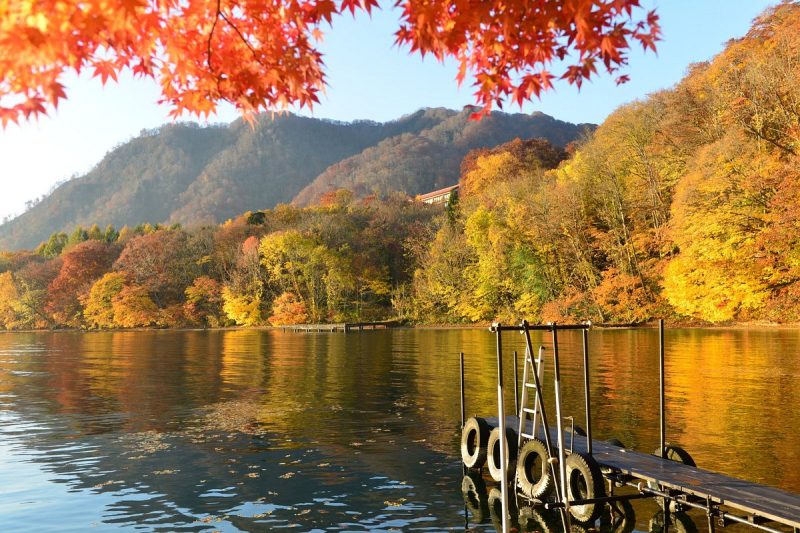
Photo: tripadvisor.com -
A resort called Lake Shirakaba is situated 1500m above sea level at the foot of Mt. Yashigamine. The lake that gives the region its name, a 4 km long body of water bordered by birch trees, is located in the area's middle. At 1,416 meters above sea level and up to 9 meters deep, Lake Shirakaba-ko is an artificial lake.
An excellent place to engage in outdoor activities is Lake Shirakaba. The lake's length is covered by a well-kept running path; you may rent bicycles to explore the area; there is also a canoe school and a riding stable there.
Nagano is renowned for its natural beauty and beautiful hiking trails. On one end of Lake Shirakaba, there is a fantastic hiking trail, and on the other, there is an amusement park. It is a man-made lake, and its name, which means "silver birch," refers to the numerous silver birches that surround the area. The little shrine with the red torii gate standing in the lake is its most noticeable feature. Additionally, you can rent small boats and canoes if you're feeling a little daring.
Location: Nagano, Japan
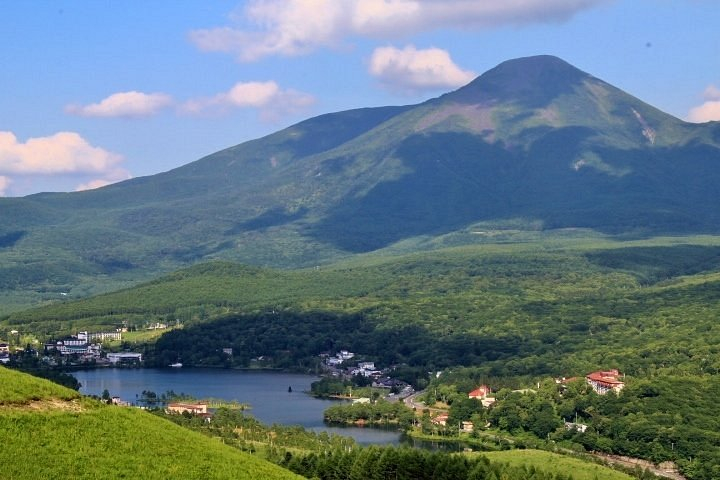
Photo: tripadvisor.com.vn 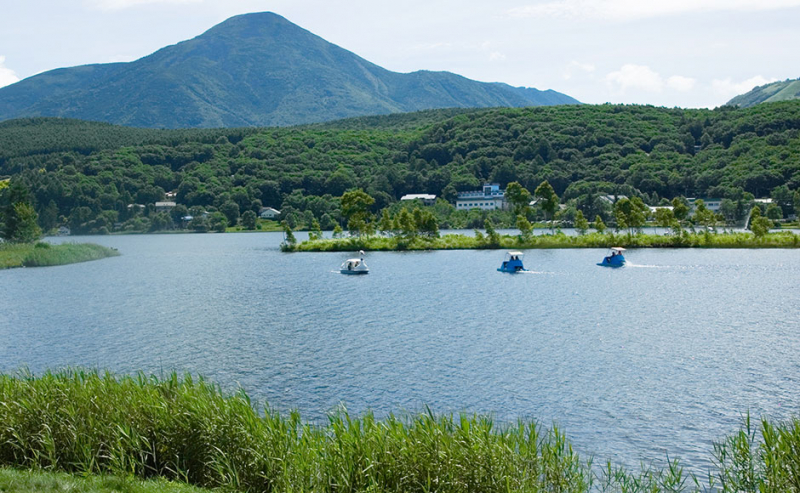
Photo: mystays.com -
A beautiful lake located in the Hakone region of Kanagawa Prefecture in Japan is called Ashinoko Lake. It is a crater lake found on the southwest side of Mount Hakone's caldera, a complicated volcano that last erupted at wakudani in 1170 CE.
The lake is well-known for its vistas of Mount Fuji, as well as for its numerous hot springs, ryokan, and historical landmarks. The Tkaid road, the primary route connecting Kyoto and Tokyo, passes through the lake. The lake is traversed by several ferries and pleasure boats, offering tourists and passengers beautiful vistas. A few of the boats are modeled after sailing battleships.
Visitors may catch a glimpse of Mt. Fuji peeking over the lake on a clear day. The largest and most intriguing aspect of the lake is a massive crimson torii gate that stands in the water and provides a breathtaking vantage point for watching the sunset. To get the most out of Lake Ashinoko and Hakone, it is advised that travelers travel during the seasonal foliage. Lake Ashinoko is one of the most beautiful lakes in Japan,
Location: Kanagawa Prefecture, Honshū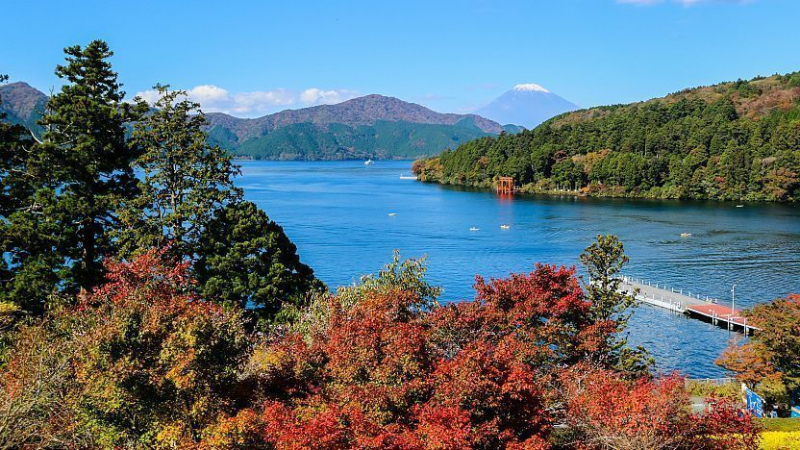
Photo: wikipedia 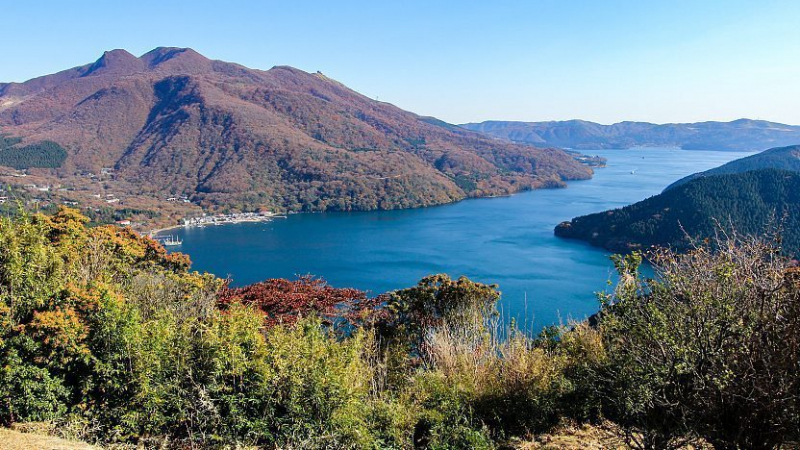
Photo: japan-guide.com -
A brackish lagoon called Lake Hamanako is located in Shizuoka Prefecture, Japan. It was once a genuine lake, but now a waterway connects it to the Pacific Ocean. It is ranked as Japan's tenth-largest lake in terms of internal bodies of water. It crosses the dividing line between Kosai and Hamamatsu.
Commercial sources for cultured Japanese eel, nori, oysters, and Chinese soft-shelled turtles include Lake Hamana. Among other things, fishermen catch flounder, whiting, and sea bass. Boating is an element of the lake's development as a resort area.
The largest brackish lake in Japan, Lake Hamanako, is a beautiful location surrounded by changing seasons. It's a saltwater lake, and the Pacific Ocean is accessible from its southern end. There are approximately 800 different species of fish and shellfish living in this lake because of its excellent climate where freshwater and oceanic water mix. Since ancient times, the region's fishing sector has prospered, increasing the number of seafood eateries. "Imagire" refers to the region where the Pacific and lake converge. On the lake, there is a huge red torii gate that is a must-see throughout the summer when the sun sets.
Location: Shizuoka Prefecture, Honshu
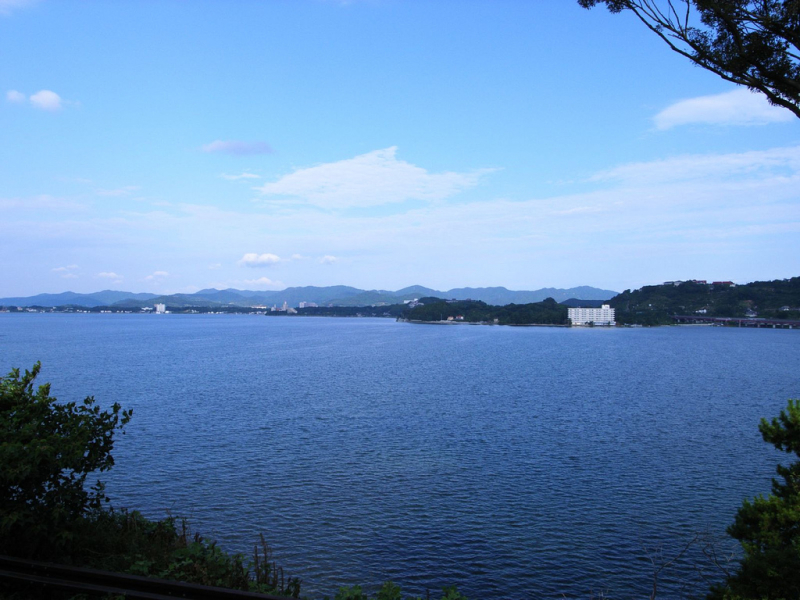
Photo: wikipedia 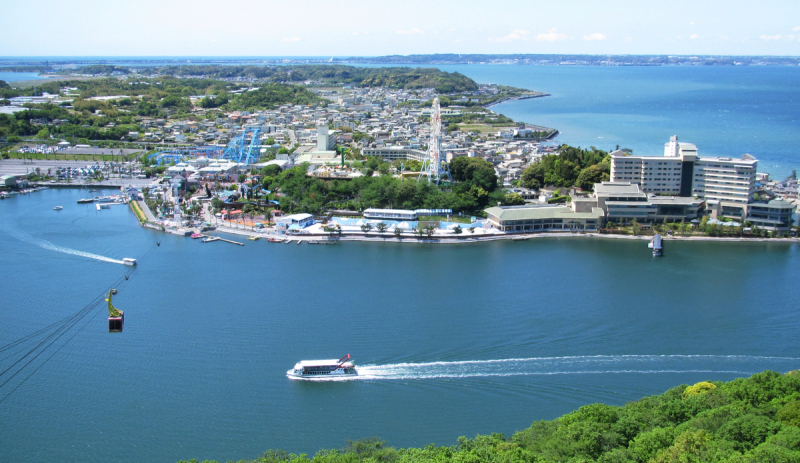
Photo: hamanako-tourism.com -
The next position on the list of the most beautiful lakes in Japan is Lake Shinji. It is a body of water in Japan's Shimane Prefecture's northeastern region. With a radius of 48 kilometers, the lake is the seventh largest in Japan. It is bounded to the north by the Shimane Peninsula and to the west and east by the Izumo and Matsue plains. Wetland covering 7,652 acres is a Ramsar Site.
Active fishing and mild tourism opportunities, including the numerous hot spring resorts constructed along the lake's coast and sunset cruises provided by local businesses, are two ways that Lake Shinji benefits the local community's economy.
The best things about Lake Shinji are its seafood and stunning sunset views. The Nakajima lagoon, which connects to the ocean, provides a habitat for a wide variety of aquatic species. On a tour boat, you may take in the lake's famous sunsets. Since Lake Shinji is connected to the Sea of Japan by Nakaumi Lagoon, it has brackish water of high quality, which contributes to the profusion of aquatic life, including whitebait, eels, sea bass, and the Shijimi clam, which is the most well-known Lake Shinji delicacy.
Location: Shimane Prefecture, Honshu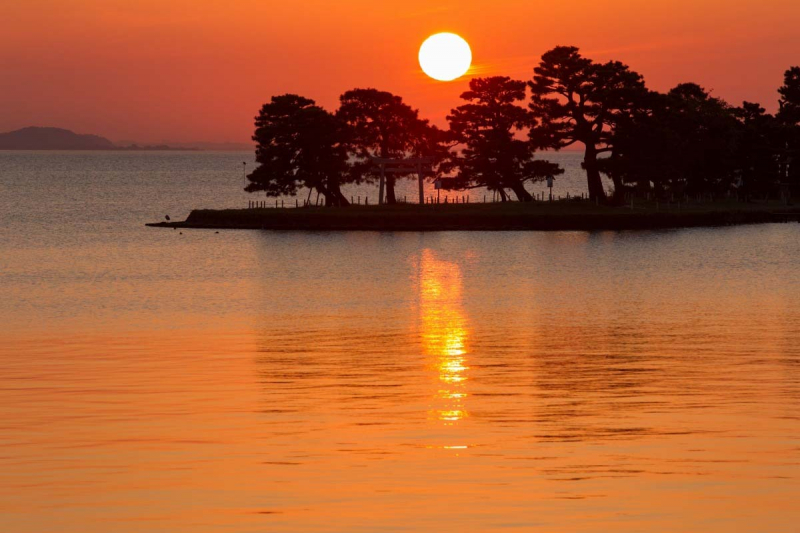
Photo: vn.zekkeijapan.com 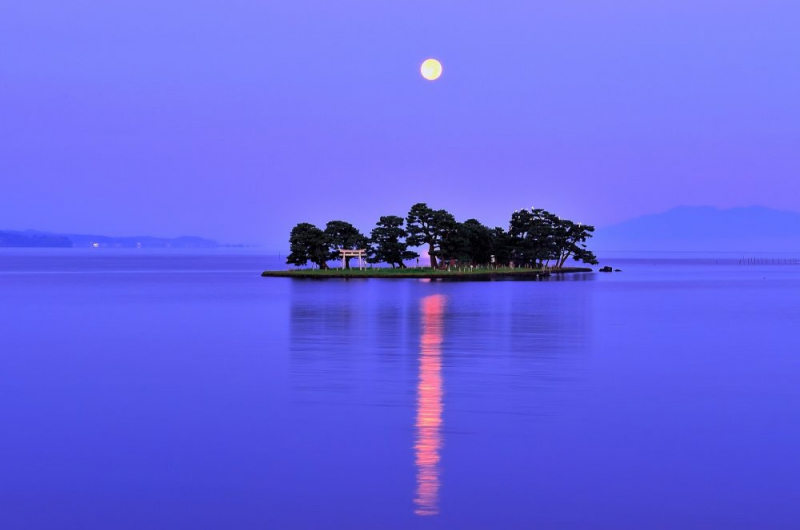
Photo: vi.japantravel.com -
This lake, which is situated at the foot of Mount Yufu-dake, is also referred to as dakenshitanike, or the lake at the foot of the mountain, in Oita. According to legend, Kuso Mori, a Confucian scholar, gave this lake the name Kinrin, which translates to "golden scales," in 1884 after observing how the lake's fish sparkled in the light of the setting sun.
The natural visual magnificence of Lake Kinrin serves as a metaphor for Yufuin. It is a small lake with a 400-meter circumference. However, the water in the lake is totally replaced two and a half times every day due to the massive amount of water that gushes out of the lake's bottom and rushes into the lake from the nearby mountains. As a result, the lake is kept exceedingly pure, and depending on your vantage point and the time of year, the reflection on the lake surface seems quite different.
One of Kyushu's greatest scenic areas is Lake Kirin, which is surrounded by morning mists. A Confucian scholar who once saw a gold-scaled fish in the water at dusk gave the lake its name. The water that wells up from hot and cold springs combines to create the enigmatic morning mist. Although the lake is lovely all year round, the misty views in the fall are absolutely magnificent. Onsens, dining establishments, and cafes abound on the lake's banks.
Location: Oita, Japan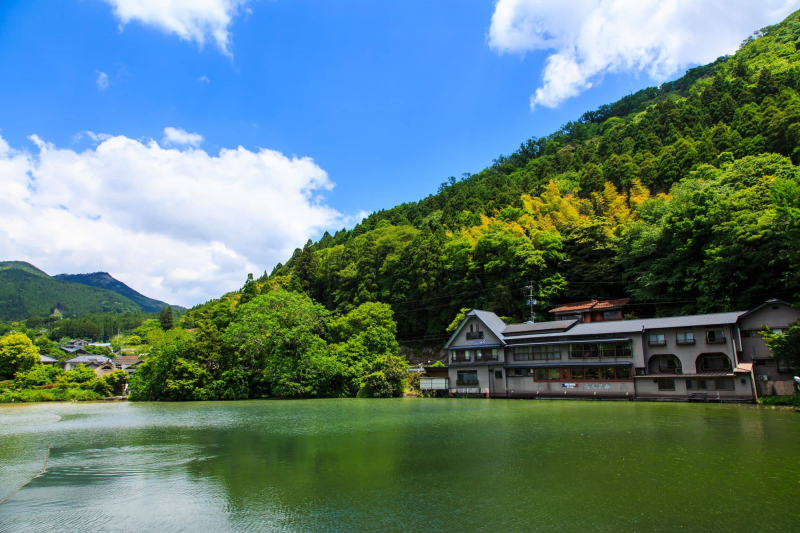
Photo: thegate12.com 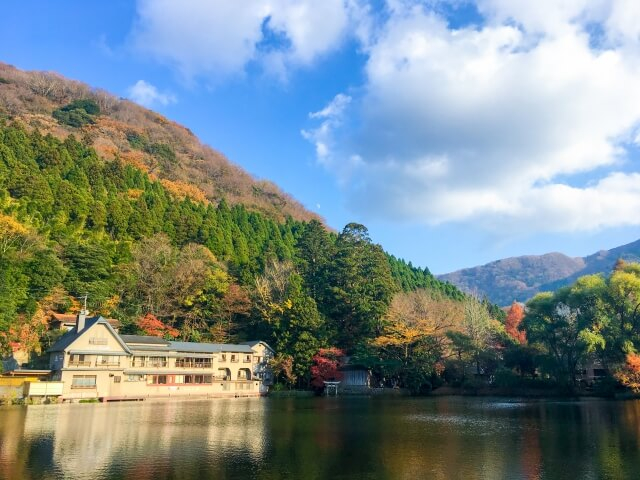
Photo: japandeluxetours.com -
At the base of Mount Bandai in the middle of the lake district of Bandai-kgen, Kitashiobara, Fukushima, Japan, lies a group of five volcanic lakes known as Goshiki-numa. On July 15, 1888, Mount Bandai erupted, demolishing dozens of towns, killing over 500 people, and forming hundreds of lakes and tarns. This is when Goshiki-numa was created.
The Bandai-kgen plateau and nearby rivers were both dammed by the eruption, which also radically changed the landscape. The Five Colored Lakes each have their own exquisite color, ranging from reddish-green to cobalt blue, thanks to the mineral deposits that the eruption imparted. Each lake's color inexplicably changes throughout the year depending on the weather. Goshiki-numa has gained popularity as a tourist site since the eruption. People may see all five lakes from a four-kilometer walking path that connects Lake Hibara to Lake Bishamon, the largest of the five lakes.
The lakes here continue to change color with the seasons, which makes this spot particularly lovely and enigmatic. To experience the lush trees here, hike to the ponds. If you go in the fall, you may see the lovely leaves that have fallen in the emerald ponds.
Location: Kitashiobara, Fukushima
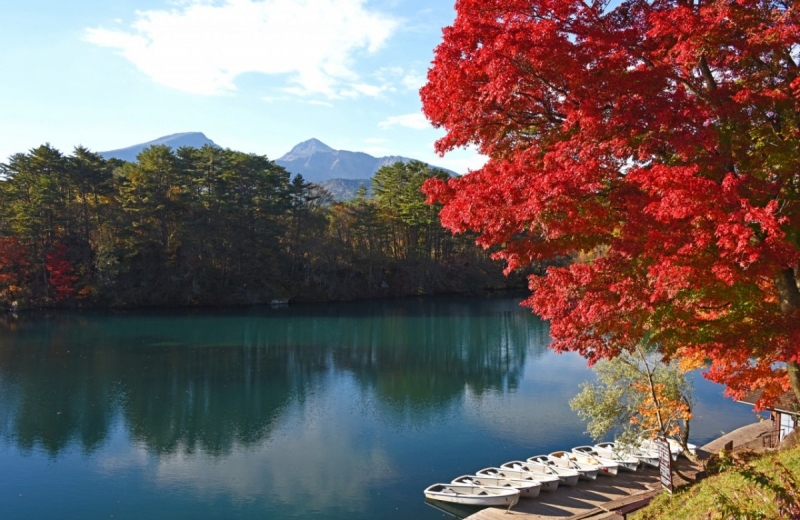
Photo: vn.express.net 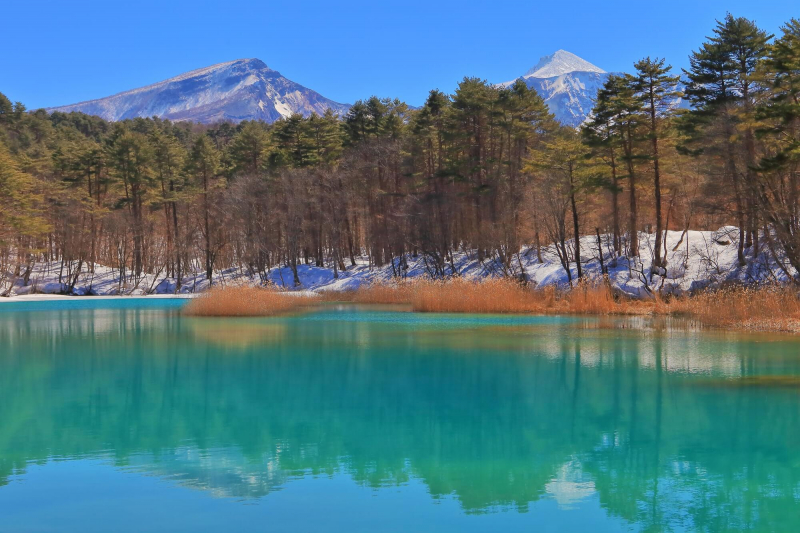
Photo: thegate12.com













